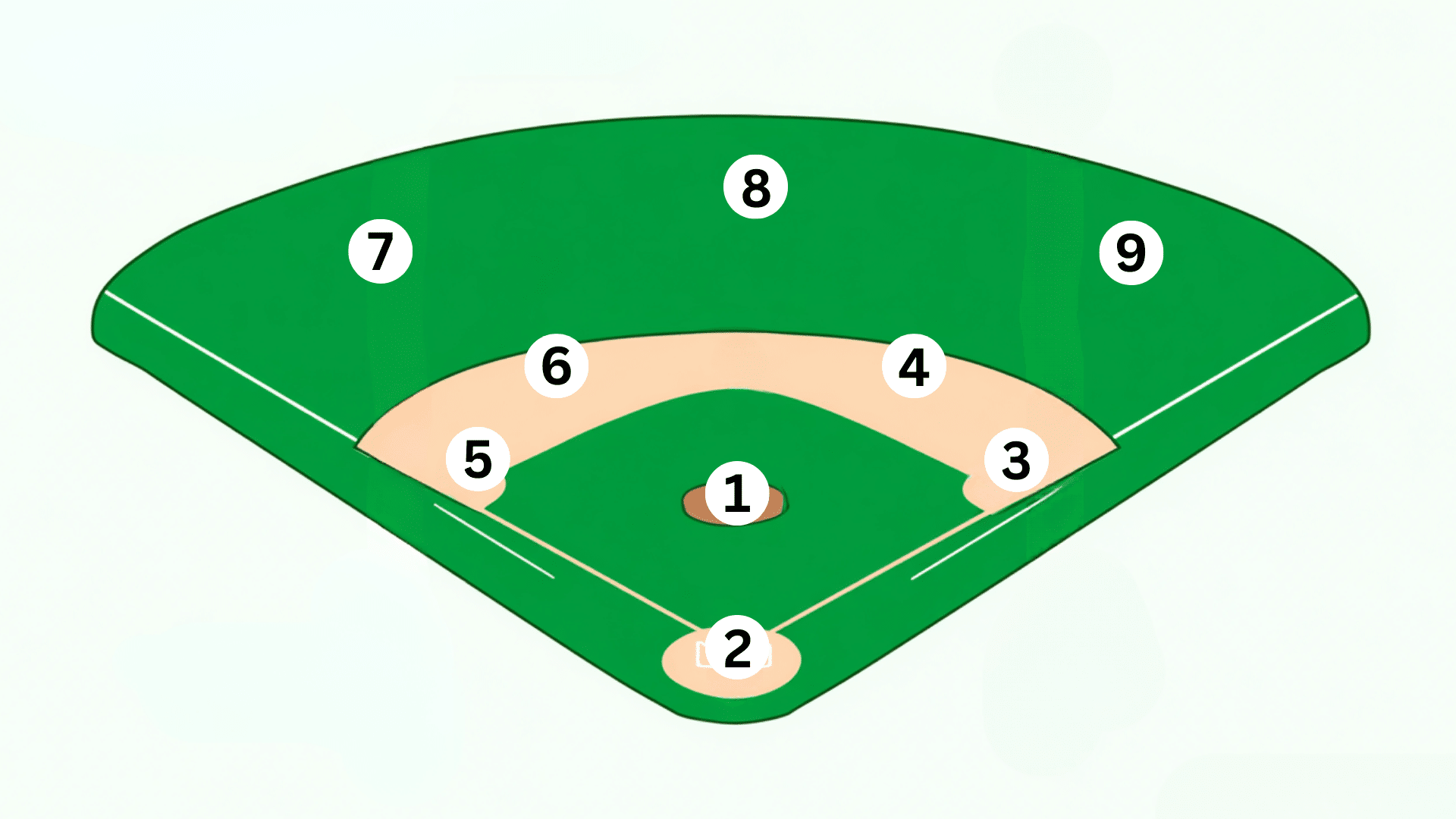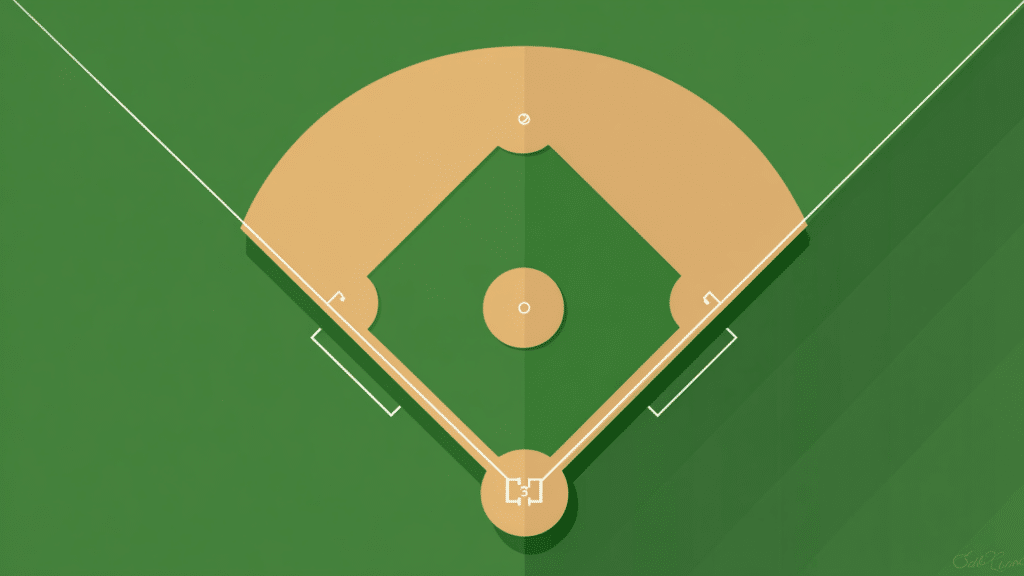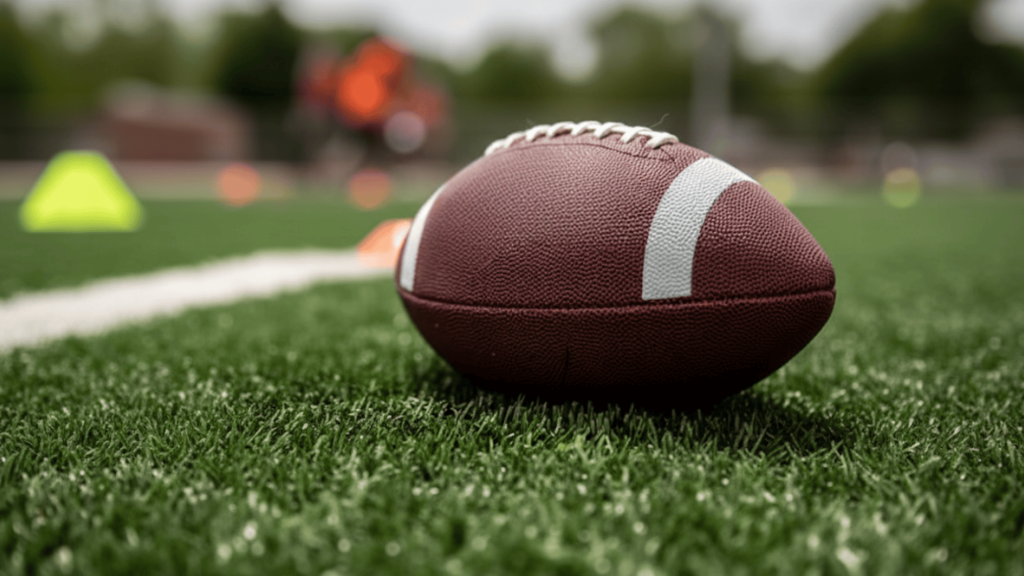Ever wondered why baseball needs nine different defensive positions?
Each spot on the diamond serves a unique purpose, creating the perfect balance of strategy, athleticism, and teamwork that makes America’s pastime so charming.
From the pitcher’s mound to the outfield grass, every player has specific responsibilities that can make or break a game.
Understanding baseball positions explained isn’t just about memorizing numbers – it’s about appreciating how nine individuals work together like a well-oiled machine.
If you’re a curious parent watching your child’s first game or a new fan trying to follow the action, mastering these roles will change how you see every pitch, swing, and defensive play unfold.
What Are Baseball Positions?
Baseball features nine standard defensive positions, each numbered 1 through 9 for official scorekeeping purposes.
This numbering system helps umpires, coaches, and statisticians track plays efficiently, with positions placed across the diamond and outfield to cover the maximum ground and defend against hits.
Each role requires specific skills – from the pitcher’s precision to the shortstop’s athleticism – and together they form baseball’s defensive foundation.
Understanding the various positions in baseball and their interconnected roles reveals the sport’s tactical depth and why proper positioning is crucial for team success.
The Infield Positions Explained

The infield forms the core of baseball’s defense, where most action occurs and split-second decisions often determine the outcome. These six positions work in perfect harmony to turn grounders into outs and prevent runners from advancing.
1. Pitcher (Position 1)
What does the pitcher do in baseball? They control the entire game’s rhythm and initiate every single play from the mound.
Pitchers need accuracy, mental toughness, and stamina to throw strikes and keep batters off balance. Their main role is to vary speed, location, and movement to get outs.
2. Catcher (Position 2)
Baseball catcher responsibilities explained include receiving every pitch, calling defensive plays, and serving as the field general. They must block wild pitches, throw out base stealers, and communicate constantly with teammates.
Catchers require strong leadership skills and quick reflexes to excel in the most demanding position in the game. Their gear protects them while they squat behind home plate for nine innings.
3. First Baseman (Position 3)
First basemen anchor the right side of the infield and receive the majority of throw-outs from other fielders. They need excellent hand-eye coordination to catch throws while keeping their foot on the base.
Most first basemen are also strong hitters since defensive demands are slightly less intensive than those of other infield positions.
4. Second Baseman (Position 4)
Second basemen cover the area around second base and excel at turning double plays with the shortstop.
They need quick feet, soft hands, and excellent communication skills to coordinate with multiple teammates. Speed and agility matter more than raw power for this position.
5. Third Baseman (Position 5)
Known as “the hot corner,” third base requires lightning-fast reflexes to handle screaming line drives and hard grounders.
Third basemen need strong, accurate arms to make long throws across the diamond to first base. They often face the hardest-hit balls due to their proximity to right-handed batters.
6. Shortstop (Position 6)
What is a shortstop in baseball? They’re typically the most athletic infielder, covering more ground than any other position.
Shortstops require great range, arm strength, and baseball smarts to handle pop flies and grounders. They team with second basemen on double plays and often lead defensively.
The Outfield Positions Explained
The outfield trio covers baseball’s vast open spaces, tracking down fly balls and preventing extra-base hits. These three positions require speed, strong arms, and excellent judgment to read balls off the bat.
1. Left Fielder (Position 7)
Left fielders patrol the left side of the outfield and need decent speed plus throwing accuracy to prevent runners from advancing.
They handle fewer difficult plays than center field but must still cover significant ground. Many power hitters play left field since defensive requirements are more manageable than in other outfield spots.
2. Center Fielder (Position 8)
The center fielder’s role in baseball is explained: they’re the outfield captain who covers the most territory and makes crucial defensive calls.
Center fielders need exceptional speed, jumping ability, and game awareness to track down balls in the gaps. They often have the strongest leadership presence among outfielders and coordinate defensive positioning.
3. Right Fielder (Position 9)
Right fielders typically possess the strongest throwing arm among outfielders since they make the longest throws to third base and home plate.
They handle fewer balls than center field but must be ready for line drives and deep fly balls. Right field often requires less speed but demands accuracy on crucial throws to cut down runners.
Special Roles and Situations
Baseball positions beyond the basics include several specialized roles that add strategic depth to modern gameplay. These variations demonstrate how teams modify traditional positioning to gain a competitive edge.
Key Special Roles
- Designated Hitter (DH): Bats for a pitcher without playing defense
- Utility Players: Flexible athletes who excel at multiple positions
- Defensive Shifts: Strategic repositioning based on batter tendencies and analytics
- Pinch Hitters/Runners: Specialized substitutes for specific game situations
- Closer/Setup Relievers: Pitchers who specialize in high-pressure late-game innings
These specialized roles demonstrate baseball’s evolving strategy, where managers constantly adjust positioning and personnel to maximize their team’s chances of success in every unique game situation.
Quick Reference Table for Baseball Positions
This comprehensive table provides an at-a-glance overview of every baseball position for easy reference during games.
| Position | Number | Primary Role | Key Traits Required |
|---|---|---|---|
| Pitcher | 1 | Throws to batters, controls game pace | Accuracy, stamina, mental toughness |
| Catcher | 2 | Receives pitches, calls plays | Leadership, quick reflexes, durability |
| First Baseman | 3 | Fields throws, covers first base | Good hands, quick reflexes |
| Second Baseman | 4 | Covers second base area, turns double plays | Speed, agility, soft hands |
| Third Baseman | 5 | Defends “hot corner,” handles hard hits | Fast reflexes, strong arm |
| Shortstop | 6 | Covers most infield ground | Athleticism, range, arm strength |
| Left Fielder | 7 | Patrols left outfield territory | Speed, throwing accuracy |
| Center Fielder | 8 | Commands outfield, covers most ground | Exceptional speed, leadership |
| Right Fielder | 9 | Covers right field, makes long throws | Strongest arm, accuracy |
Use this guide to quickly identify each player’s primary responsibilities and key attributes.
Note: Position numbers are used universally in scorekeeping and help identify defensive assignments during gameplay analysis.
Why Understanding Positions Matters
Grasping baseball positions dramatically enhances your viewing experience by revealing the strategic chess match happening on every play.
When you understand each player’s responsibilities, you’ll notice subtle defensive adjustments, appreciate spectacular plays, and follow the tactical decisions that separate good teams from great ones.
Why are baseball positions important? They showcase how individual skills blend into collective success, turning nine separate players into a coordinated defensive unit.
This knowledge helps new fans follow the game easily and offers experienced viewers deeper insight into strategy, player evaluation, and key decisions that shape outcomes in America’s sport.
Conclusion
Every position has a purpose in baseball’s intricate defensive web, from the pitcher’s game control to the right fielder’s cannon arm.
These nine roles work together to create the sport’s unique blend of individual skill and team coordination.
Understanding baseball positions explains why the game remains fascinating – each player’s role creates dramatic moments that shift momentum.
Recognizing the importance of each position enhances enjoyment and strategic appreciation.
The beauty lies in how these distinct roles merge into seamless teamwork, creating the defensive artistry that makes baseball truly America’s pastime.
Which position do you think requires the most skill and athleticism? Share your thoughts and favorite defensive memories in the comments below!






































